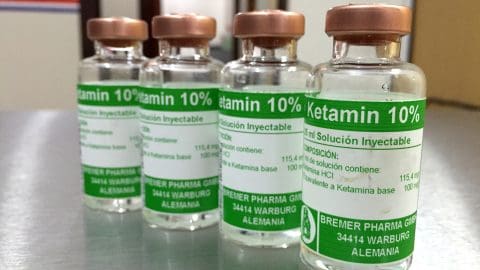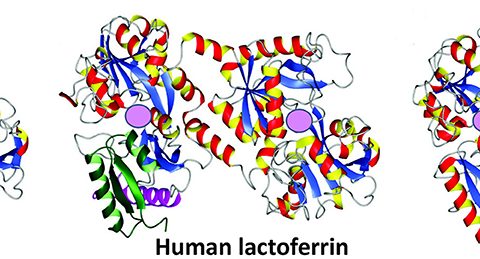Recent evidence strongly suggests that testosterone deficiency is a predisposing factor for various chronic illnesses, including cardiovascular disease, diabetes and osteoporosis.1-3 Testosterone deficiency has also been implicated as a modifiable disease risk factor for various chronic diseases in otherwise well patients.4-7
Cardiovascular disease, diabetes and osteoporosis-related fractures consume a significant portion of the $2.3 trillion in annual U.S. health expenditures. The economic impact of diabetes is estimated at $503 billion, $152 billion for cardiovascular disease, and $6 billion for osteoporosis-related fractures.8-10
Thus, the total burden of these diseases is over $660 billion, representing approximately 29% of all U.S. health care expenditures in 2008. Since testosterone deficiency is a potentially modifiable risk factor for these and other medical conditions, it may be responsible for substantial financial and quality-of-life burden on the U.S. health care system.11
A study was conducted to specifically quantify the U.S. health care (or should I say sick care) cost burden imposed by consequences of testosterone deficiency …12
STUDY METHOD
Incidence, prevalence, and mortality of cardiovascular disease, diabetes, and osteoporosis-related fractures were collected for men ages 45-74 from six national databases and large cross-sectional studies. Relative risk (RR) rates were determined for these medical conditions in patients with testosterone levels below 300 ng/dL. The prevalence of TD was determined for this cohort of men.
RESULTS
Actual and adjusted (normalized for testosterone def iciency) rates of cardiovascular disease, diabetes, and osteoporosis-related fractures in U.S. men aged 45-74, were calculated.
iciency) rates of cardiovascular disease, diabetes, and osteoporosis-related fractures in U.S. men aged 45-74, were calculated.
It was determined that, over a 20-year period, testosterone deficiency is projected to be involved in the development of approximately 1.3 million new cases of cardiovascular disease, 1.1 million new cases of diabetes, and over 600,000 osteoporosis-related fractures.
In year 1, the attributed cost burden of these diseases was approximately $8.4 billion.
Over the entire 20-year period, testosterone deficiency may be directly responsible for approximately $190-$525 billion in inflation-adjusted U.S. health care expenditures.
Testosterone deficiency was implicated in almost 1 million deaths and approximately 3 million cases of cardio-metabolic diseases over a 20-year period.
CONCLUSION
More and more research is emerging showing that testosterone deficiency may be a significant contributor to adverse public health. This study clearly demonstrates that testosterone deficiency imposes a substantial public health burden on the U.S. health care system.12
These findings suggest that management of sub-optimal testosterone levels in middle-aged and elderly men is an appropriate consideration for the prevention of several significant chronic diseases, especially cardiovascular disease, diabetes, and osteoporosis-related fractures.
Treatment of sub-optimal testosterone levels would not only realize substantial health care cost savings, but, but would also confer invaluable relief from suffering on a personal level in affected men.13-16
References:
1. Khaw KT, Dowsett M, Folkerd E, et al. Endogenous testosterone and mortality due to all causes, cardiovascular disease, and cancer in men: European prospective investigation into cancer in Norfolk (EPIC-Norfolk) Prospective Population Study. Circulation. 2007;116(23):2694-2701.
2. Meier C, Nguyen TV, Handelsman DJ, et al. Endogenous sex hormones and incident fracture risk in older men: the Dubbo Osteoporosis Epidemiology Study. Archives of internal medicine. 2008;168(1):47-54.
3. Selvin E, Feinleib M, Zhang L, et al. Androgens and diabetes in men: results from the Third National Health and Nutrition Examination Survey (NHANES III). Diabetes care. 2007;30(2):234-238.
4. Nettleship JE, Jones RD, Channer KS, et al. Testosterone and coronary artery disease. Frontiers of hormone research. 2009;37:91-107.
5. Melton LJ, 3rd, Alothman KI, Khosla S, et al. Fracture risk following bilateral orchiectomy. The Journal of urology. 2003;169(5):1747-1750.
6. Basaria S, Muller DC, Carducci MA, et al. Hyperglycemia and insulin resistance in men with prostate carcinoma who receive androgen-deprivation therapy. Cancer. 2006;106(3):581-588.
7. Keating NL, O’Malley AJ, Smith MR. Diabetes and cardiovascular disease during androgen deprivation therapy for prostate cancer. Journal of clinical oncology : official journal of the American Society of Clinical Oncology. 2006;24(27):4448-4456.
8. Lloyd-Jones D, Adams RJ, Brown TM, et al. Heart disease and stroke statistics–2010 update: a report from the American Heart Association. Circulation. 2010;121(7):e46-e215.
9. Economic costs of diabetes in the U.S. In 2007. Diabetes care. 2008;31(3):596-615.
10. Orsini LS, Rousculp MD, Long SR, et al. Health care utilization and expenditures in the United States: a study of osteoporosis-related fractures. Osteoporosis international : a journal established as result of cooperation between the European Foundation for Osteoporosis and the National Osteoporosis Foundation of the USA. 2005;16(4):359-371.
11. Maggi M, Schulman C, Quinton R, et al. The burden of testosterone deficiency syndrome in adult men: economic and quality-of-life impact. The journal of sexual medicine. 2007;4(4 Pt 1):1056-1069.
12. Moskovic DJ, Araujo AB, Lipshultz LI, et al. The 20-year public health impact and direct cost of testosterone deficiency in U.S. men. The journal of sexual medicine. 2013;10(2):562-569.
13. Hackett G, Cole N, Bhartia M, et al. Testosterone replacement therapy with long-acting testosterone undecanoate improves sexual function and quality-of-life parameters vs. placebo in a population of men with type 2 diabetes. The journal of sexual medicine. 2013;10(6):1612-1627.
14. Zhang XW, Liu ZH, Hu XW, et al. Androgen replacement therapy improves psychological distress and health-related quality of life in late onset hypogonadism patients in Chinese population. Chinese medical journal. 2012;125(21):3806-3810.
15. Tong SF, Ng CJ, Lee BC, et al. Effect of long-acting testosterone undecanoate treatment on quality of life in men with testosterone deficiency syndrome: a double blind randomized controlled trial. Asian journal of andrology. 2012;14(4):604-611.
16. Ho CC, Tong SF, Low WY, et al. A randomized, double-blind, placebo-controlled trial on the effect of long-acting testosterone treatment as assessed by the Aging Male Symptoms scale. BJU international. 2012;110(2):260-265.









I wonder if taking DHEA can help to increase ones production of testosterone safely.
Note that DHEA does NOT increase T production; DHEA gets converted to T (and estradiol).
Thanks for the information Monica, appreciate you always 🙂
You’re welcome. 🙂
Can you do a separate post on DHEA? I’m curious about what you have to say about it – there seems to be a lot of misinformation about DHEA.
Cal, I’ve recently published two articles on DHEA here on the BZ:
http://www.brinkzone.com/?s=dhea
Great article, but now it leads to the question: How do you solve for T deficiencies? Or put another way, what are some legitimate ways to solve for low T? It’s too common nowadays to see commercials with low T ointments/pills that sound very much like magic fat loss pill commercials. In my limited experience I’ve heard that Vit D3 and creatine can help incrementally. Are there other, better, methods?
thx,
Dave
I often wonder if Low T is a factor with prostate problems in older men?